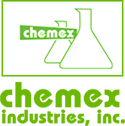HydroClear Technology uses Active Hydroxyl Gas to Sanitize the Air in Occupied Spaces Actively
The air we breathe can often contain invisible particles and bacteria that can cause health risks. To ensure the safety of our employees, customers, and other visitors in commercial spaces, it is essential to implement sanitization protocols that keep the air clean and safe. One of the most effective ways to accomplish this is through the use of active hydroxyl technology.
Active hydroxyl is a powerful sanitizing agent that works through a complex process to reduce microbial levels in the air. This technology relies on a combination of ultraviolet light and catalytic oxidation to break down organic compounds like bacteria, mold, viruses, and other pollutants. When UV light hits these molecules, it causes them to break apart into smaller components. The hydroxyl radicals generated in this process then attach to and break down the remaining molecules, destroying them in the process. This process is highly effective and can reduce microbial levels by up to 99%.
Active hydroxyl technology is an ideal method for commercial sanitization because it does not rely on harsh chemicals or other pollutants. This makes it safe to use in occupied spaces and can be used without disrupting normal operations. It is also an extremely fast method of sanitization, taking only minutes to complete a cycle. And because it works autonomously, there is no need for additional staff or personnel to oversee the process.
Overall, active hydroxyl is an ideal solution for commercial sanitization. It is fast, efficient, and, most importantly, safe. If you’re looking to keep the air clean and safe in your commercial space, active hydroxyl technology is a great option to consider.
Why is HydroClear Technology a Superior Method of Sanitation
Photocatalytic oxidation is a highly effective method for sanitizing air, as it uses Ultra Violet (UV) light to interact with catalysts that produce active oxygen radicals. These radicals are powerful oxidizers that can break down volatile organic compounds (VOCs) and other airborne contaminants. They can even destroy certain species of mold, bacteria, and viruses. Compared to other air sanitizing methods, such as ozone or chemical sprays, photocatalytic oxidation is far more efficient and cost-effective. It requires no additional chemicals or materials to be added to the air, making it both safe and environmentally friendly. Furthermore, since UV light is used for the process, it does not generate any byproducts or odors. This makes it an ideal choice for indoor environments where air quality is a concern. Thus, photocatalytic oxidation provides a safe and effective method of sanitizing the air, making it a superior alternative to other methods of air sanitization.
See Technical Data and More info...
